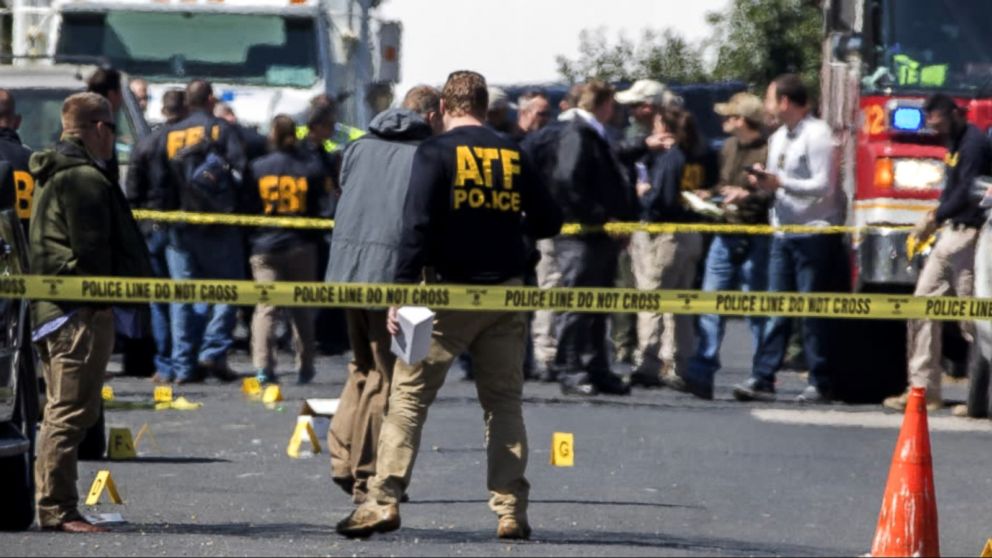Timeline of the Texas bombings that had a state on edge
The search for the suspected serial bomber accused of terrorizing the city of Austin, Texas, for weeks came to an explosive end this morning.
The suspect, who has since been identified as Mark Anthony Conditt, was surrounded by police when an explosive went off in his vehicle.
The investigation into the case is far from over, as law enforcement officials work to determine how the 24-year-old man was able to build so many different explosives and detonate them without being caught.
The bombings started March 2, claiming the first of two fatalities.
Here is the timeline of events that have led hundreds of investigators on a manhunt.
Friday, March 2
About 6:55 a.m., police received calls about an explosion at a private residence.
The victim in this explosion, Anthony Stephan House, died from his injuries after being transported to a local hospital.
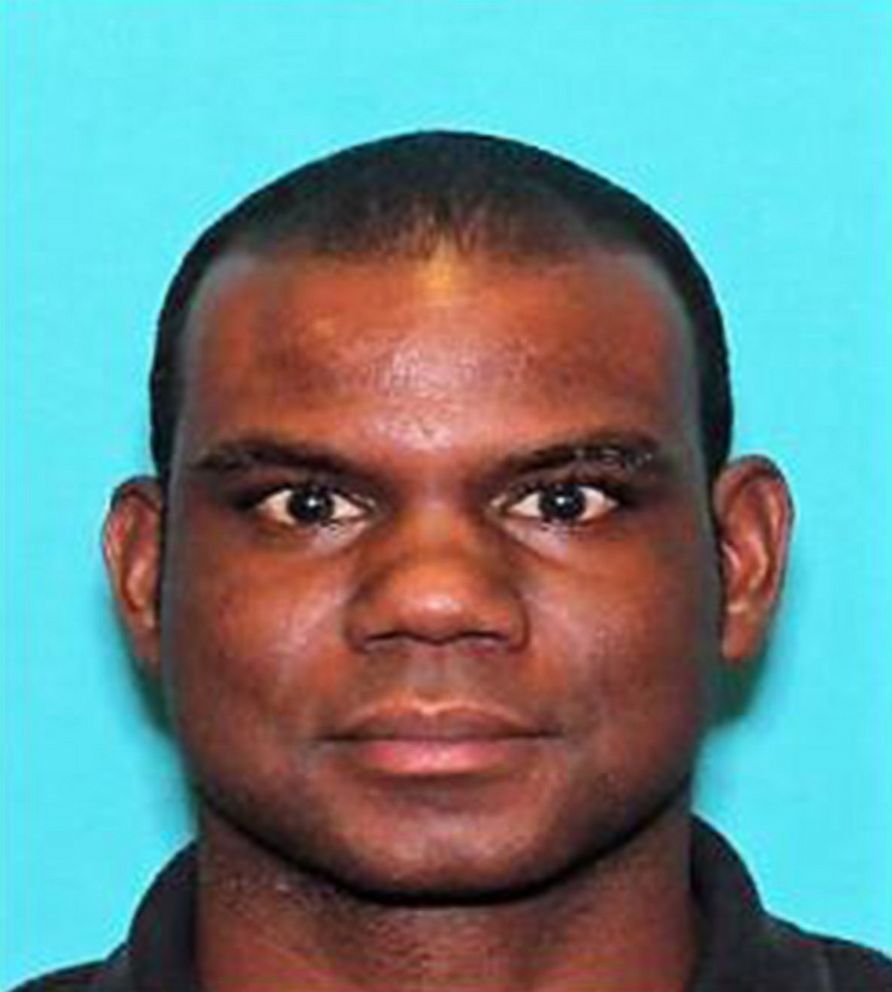
House's death was initially investigated as suspicious, and Austin Police Chief Brian Manley said that after the subsequent bombings it was reclassified as a homicide investigation.
Monday, March 12

The first blast of the day, reported about 6:44 a.m., killed a male teenager, later identified as Draylen Mason, and injured a woman in her 40s.

The blast occurred at a single-family home in the northeast section of the city and was caused by a package that had been placed on the porch of a home rather than being delivered, police said. Police believe the explosion happened after residents took the package inside to open it.
The explosion was "very similar to the incident that occurred in Austin back on March 2, and if you’ll remember, that incident also occurred in the morning hours when the victim, in that case, went out front and found a package on their front steps that exploded causing that individual’s death," the Austin police chief said at a news conference.
Police received calls about the second explosion of the day at 11:50 a.m. The blast injured a 75-year-old woman who Manley said "came outside of her residence and found a package out front and picked up that package."
Sunday, March 18
Authorities made a direct appeal to the bomber, with Manley saying that he hoped the bomber was watching and would "reach out to us before anyone else is injured or killed."
That didn't stop the carnage, however.
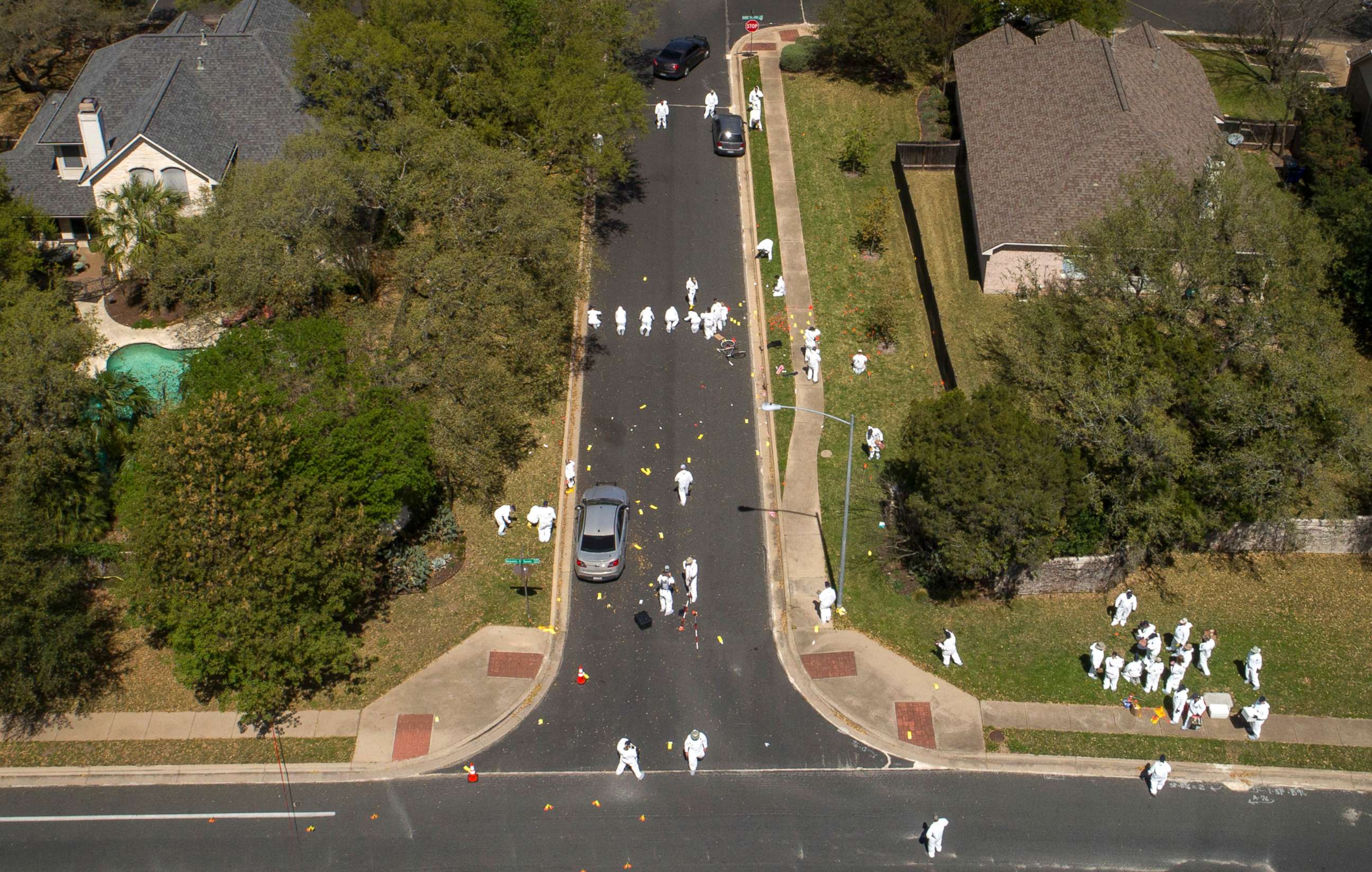
Hours later, the fourth blast was triggered when two victims either stepped on or kicked a tripwire as they were walking on a sidewalk in the Travis Country neighborhood of Austin. The tripwire set off the explosive device that was placed near a fence at 8:32 p.m. on Sunday March 18, police said.
Manley said the use of a tripwire to detonate the device is different than the package bombs used in the other attacks that occurred on March 2 and March 12, and signaled that whoever is responsible has "a higher level of sophistication, a higher level of skills" than previously suspected.
The victims, ages 22 and 23, were in stable condition at a hospital with "significant injuries."
Police issued a “safety alert” in the wake of the bombing, urging people located within a half-mile radius of where the incident occurred to stay indoors until 10 a.m. local time.
Tuesday, March 20
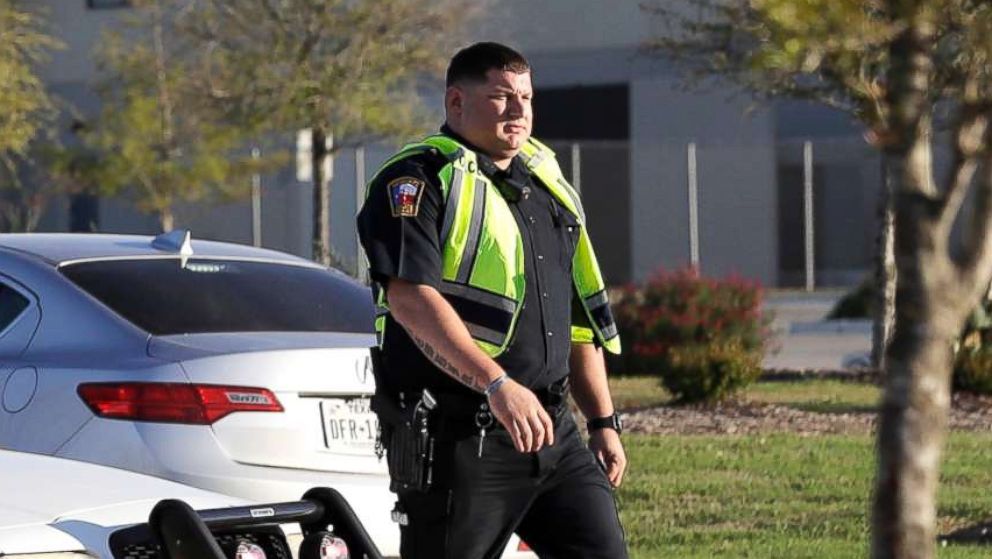
A fifth explosion happened in the early hours this morning, but the distance and nature of the blast differ from the earlier instances.
The latest explosion occurred about 12:30 a.m. at a FedEx facility in the San Antonio suburb of Schertz, about 65 miles southwest of Austin, where two men were injured Sunday night in the fourth bombing in 17 days to rock the Texas capital.
A medium-sized box containing nails and metal shrapnel exploded on a conveyor belt, according to police, who spoke with ABC San Antonio affiliate KSAT-TV.
The injuries to the worker were "possibly from the sound of the device going off," Lt. Manny Casas of the Schertz Police Department said. The worker was treated at the scene and did not have to be hospitalized, officials said.
At noon local time, FedEx confirmed, the person who had shipped the explosive package also "shipped a second package that has now been secured and turned over to law enforcement."
Over the course of the day, three FedEx locations were closed and being investigated, the first one in Schertz followed by two others in and around Austin.
There was some initial concern that an old military ordinance that had been donated to a Goodwill in Austin was connected to the bombings. But that was later determined to be false. The package caused an injury to a store employee and emergency responders assessed the situation. Police later said that it was not an explosive device, it was not connected to the bomber and was not done by an attempted copycat.
Wednesday March 21
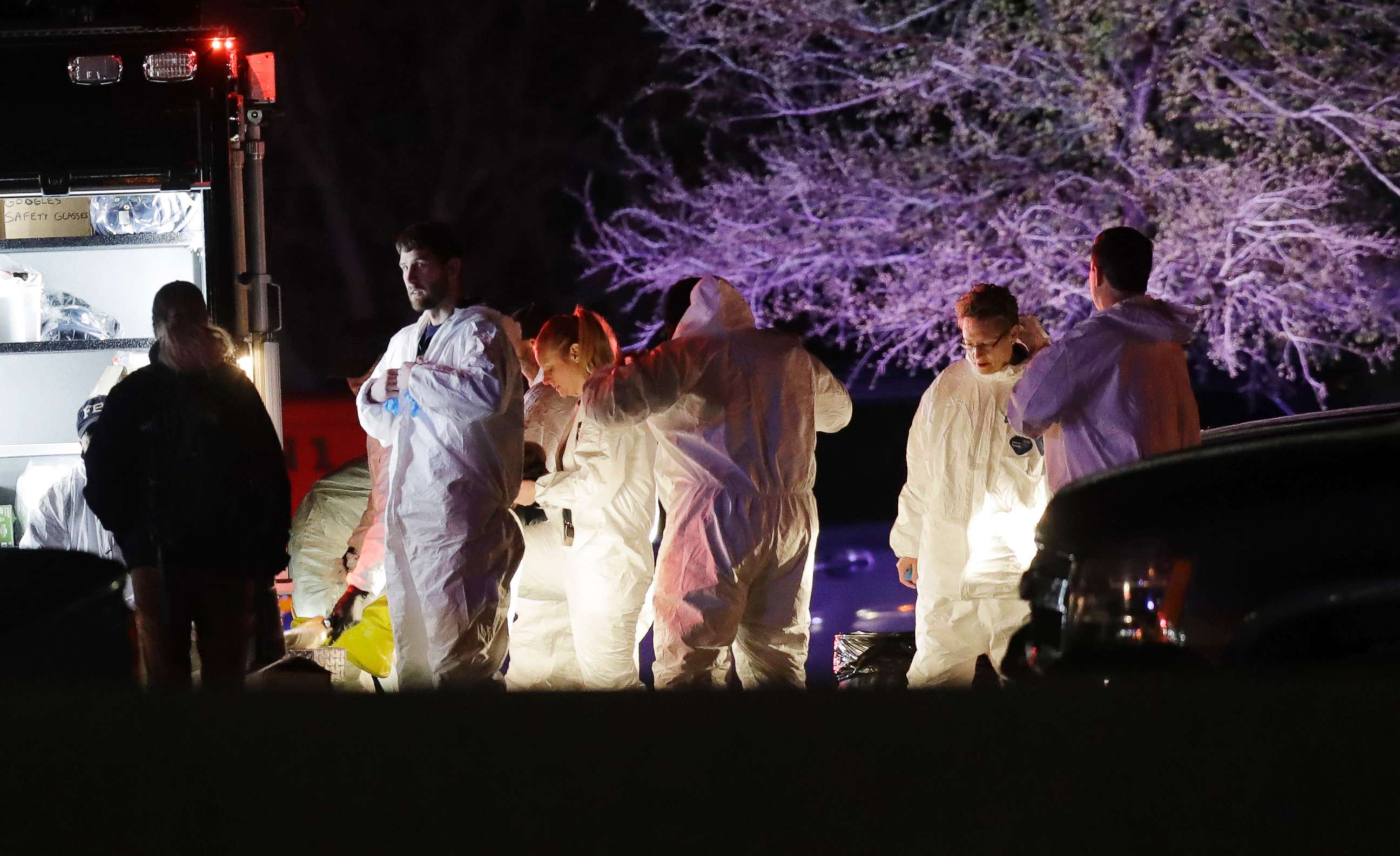
The manhunt came to an explosive end in the early hours of March 21.
The suspect, who law enforcement sources later publicly identified as Mark Anthony Conditt, died from another bomb after local and federal agents closed in on him.
The confrontation occurred in Round Rock, about 20 miles north of Austin, where the string of bomb attacks began March 2.
Police zeroed in on the eventual suspect as a person of interest over the past 24 to 36 hours, eventually locating his vehicle with the help of surveillance teams, authorities said at a press conference early today.
Local and federal authorities took up positions near a hotel where the suspect had stopped his vehicle, awaiting tactical teams to help apprehend him.
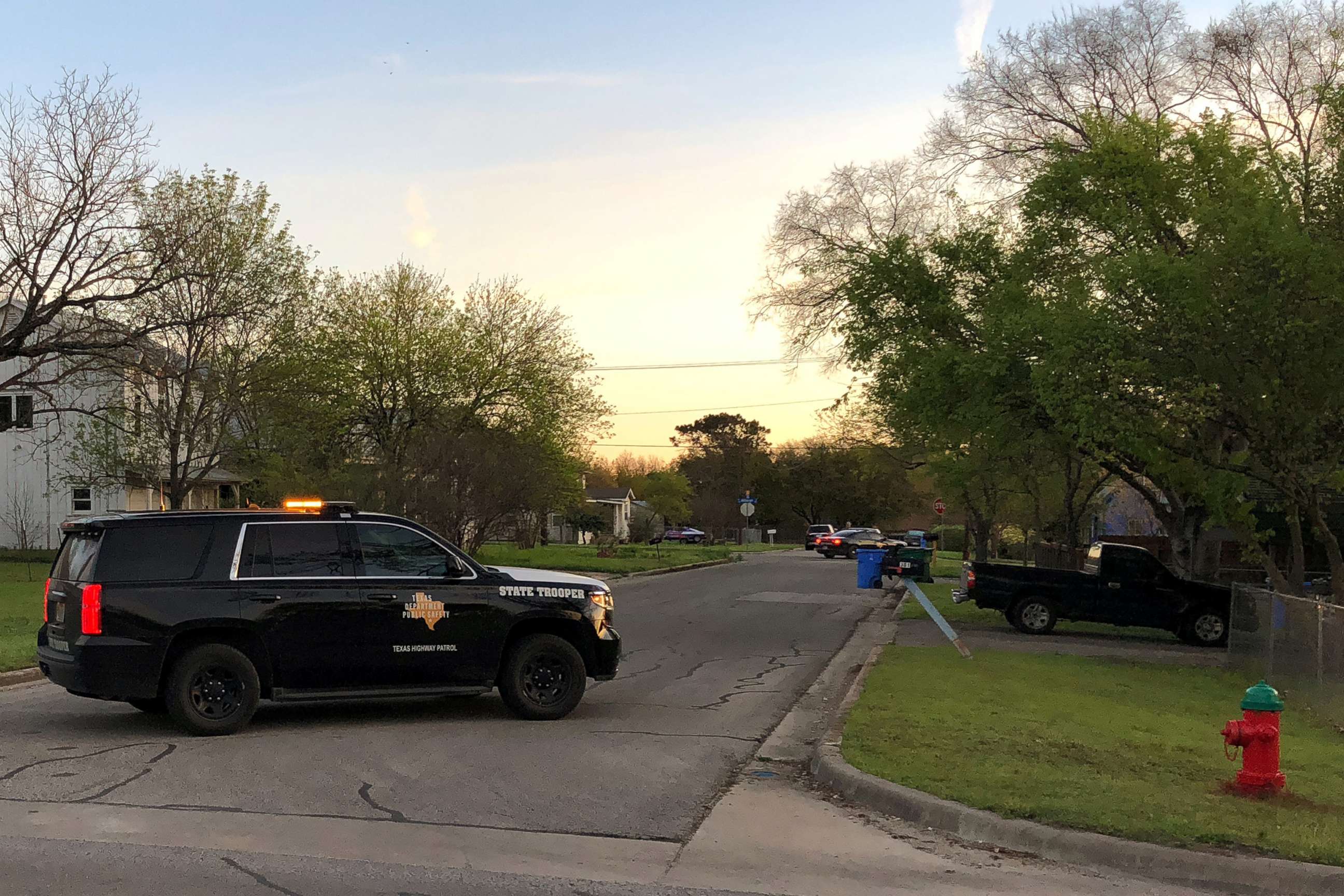
The suspect, after beginning to drive away, stopped on the side of the road and as Austin SWAT team members approached, the device detonated inside his vehicle. One officer was knocked back and suffered minor injuries, and another fired at the suspect.
"There will be a lengthy investigation that will take place regarding the officer-involved shooting," Manley said.
